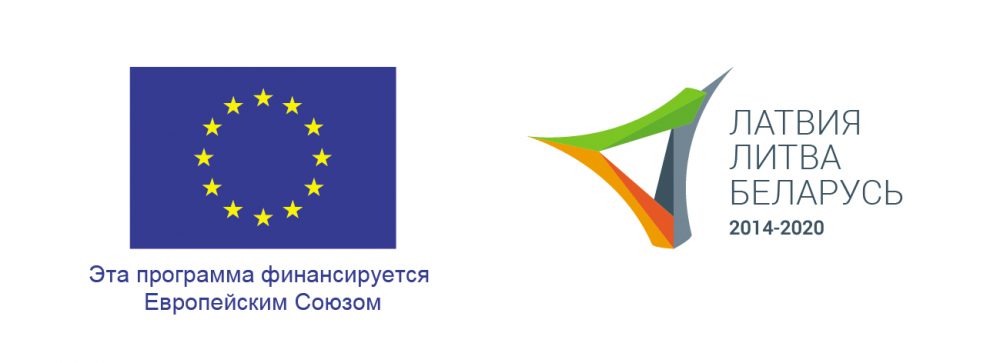 Preili Museum of History and Applied Arts (Latvia), Grodno State Museum of the History of Religion (Belarus) and Panevezys Local Lore Museum (Lithuania) joint virtual exhibition – The Archaeology.
Preili Museum of History and Applied Arts (Latvia), Grodno State Museum of the History of Religion (Belarus) and Panevezys Local Lore Museum (Lithuania) joint virtual exhibition – The Archaeology.
Preili Museum of History and Applied Arts
Before the arrival of the Crusaders, Preili land was part of the ancient Latgallian state Jersika. It is believed that the Preili land centre was located to the SE of the modern town, where Plivdas and Anspoki hillforts are located. Other hillforts around Preili – Šņepsts and Pilišķi – as well as many ancient burrial sites have preserved evidence of Latgallians living here. Later, the Preiļi land centre moved to the current territory of Preiļi city park. Archaeologists have also paid attention to the Preiļi manor complex and park, where archaeological research has been carried out in the manor chapel crypt built in 1817 and in the adjacent late 17th and 18th century cemetery.

Although there is evidence that Latgallians knew Christianity even before the arrival of the German Crusaders, cross shaped pedants were used mostly as an element of clothing decoration, while people still retained paganism. The particular cross, along with other finds relating mainly to 11th-13th centuries was found during archaeological excavations in 2006 in Anspoki hillfort.
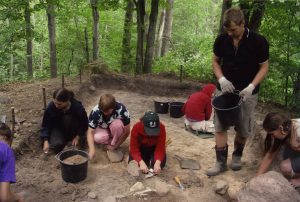
Antonija Vilcāne (b. 1956, Preili), a graduate of Preili Secondary School No. 1, a doctor of history and an archaeologist, has made a great contribution to the study of the ancient history of the Latgale region. During her professional activity she has participated in archaeological excavations in all regions of Latvia, including the archaeological research of the specially protected cultural monument – Turaida Museum Reserve. She has also supervised archaeological research works in the Preiļi district and the town – in the territory of the Bučki ancient burial site and in the cemetery near the Preiļi manor chapel. In 2006, excavations took place in the Anspoki hillfort near Preili. The character of the finds indicates that Anspoki hillfort was occupied in the 11th -13th century.
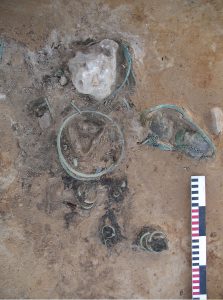
In 2006, under the leadership of dr. hist. Antonija Vilcāne, archaeological research was carried out in the Bučki ancient burial site in Vārkava parish by lake Bleida, near Preili. During the archaeological excavations an unexpectedly rich 11th century Latgallian woman’s burial was revealed. It contained 3 neckrings, 2 head ornaments, 2 penannular brooches, 4 bracelets on one hand, 2 – on the other hand. One of the head ornaments has a chain with pendants. The inventory was restored and is displayed in the main exposition of the Preiļi Museum of History and Applied Arts.
Grodno State Museum of the History of Religion
The archaeological heritage of Grodno as well as of the entire Prinemansky region is greatly rich and diverse. There are about 20 monuments of primitive history on the modern territory of the city. The artifacts from the Iron Age and the Middle Ages are known as well. But the “archaeological highlight” is, of course, the ancient Grodno, the territory of the Old and New Castles. The historical center of Grodno and a number of prehistoric monuments are included in the State List of Historical and Cultural Values of the Republic of Belarus.
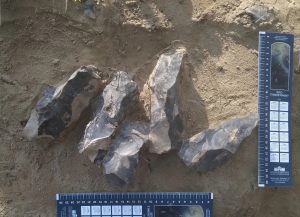
The most ancient site on the territory of the city is Grodno site 14. It is located in the Pyshki forest park on the right high bank of the Neman River near the influx of an unnamed stream. The outcrops of this stream contain a lot of flint, which was the main raw material for making tools in the Stone Age. In the period of 10 800-10 200 thousand years ago the carriers of the Valkushan culture came here to extract flint and carried out its initial processing here; they formed lithic cores for further labor tools manufacture. During the research of the archaeological expedition of the Grodno State Museum of the History of Religion in 2020, a “treasure” of prenuclei was discovered at the monument. These are specially processed nodules (concretions) from which flakes were then obtained. However, these lithic cores were forgotten and were not used by the ancient inhabitants of the city.
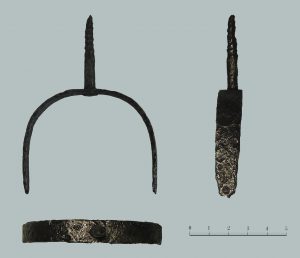
Another attraction of the city is the Borisoglebskaya (Kolozhskaya) Church of the 12th century. This is one of the oldest monuments of sacred architecture preserved in Belarus. There was a cemetery around it, and a little later a monastery was located there. During the archaeological excavations of this object a spur was discovered. This is an element of a rider’s equipment that helps to control a horse. It has a semicircular shape; there are screw notches at the end of the rowel. It was attached to the leg with straps that were connected to the spur with rivets.
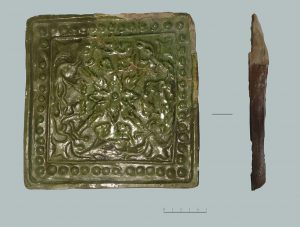
The stove was one of the most important elements of the interior in the Middle Ages and in the Modern Age. Stoves had different shapes and purposes, but they were often decorated with rectangular or square ceramic tiles (Dutch tiles, glazed tiles). The presented tiles have been restored, most of them were found during excavations in 1987 on the territory of the Old Castle in Grodno. This local product is typical of the 17th century. It has a one-piece frame and an ornamental motif of “hammered metal”, there is no rump on it. The plate was covered with green glaze.
Panevėžys Local Lore Museum
Findings of Berčiūnų burial mound
During the Roman period, burial mounds dominated in Panevėžys region, which belong to the cultural territory of Samogitian (Žemaitija) and Northern Lithuanian burial mounds. The Berčiūnai burial mound, located 2 km to the West of Panevėžys city, has attracted a lot of attention from archaeologists. Part of the findings of this burial mound are exhibited in the exposition “From Prehistory to the Modernizing City” of Panevėžys Museum of Local Lore established in 2020. In the exposition visitors can see more than 370 pieces of archeological findings and musealias from the earliest times – the Stone Age – to the XVI th century.
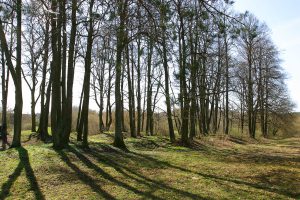
Currently, 54 slightly damaged burial mounds remain in the burial ground. They are located on the right bank of the Nevėžis river. It is one of the largest burial mounds in the middle area of the Nevėžis river. The burial mounds cover the II – V centuries. Burial mounds, from 7 meters to 15.5 meters in diameter and from 0.5 meters to 1.3 meters in height, are surrounded by a stone wreath.
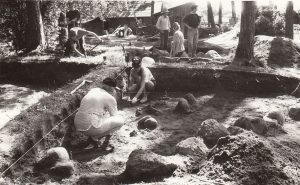
During 1989–1996, larger-scale research of Berčiūnai burial mounds were carried out. There were investigated 25 slightly damaged burial mounds; there were found stone crowns, unburnt and burnt graves of the dead with grave goods.
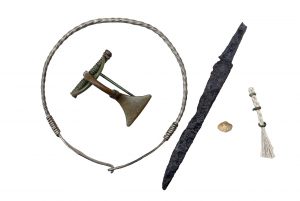
In the Panevėžys Local Lore Museum are exhibited findings from the 60-th burial mound. These are grave goods of the rich girl’s grave (1-st grave in the burial mound): silver collar with segmented edges, iron knife, arch brass brooch, shell (amulet) and brass chaplet elements.
This publication was produced with the financial support of the European Union. Its contents are the sole responsibility of Preili County council, Panevėžys Local Lore Museum and Grodno State Museum of the History of Religion and do not necessarily reflect the views of the European Union.
About the project ENI-LLB-1-244 “Promotion of historical and culture cross border through museums innovations”
The project aims to build a cross border cooperation platform creating preconditions for ensuring the increasing interest of tourists and visitors about the cultural and historical heritage in the border area of Latvia, Lithuania and Belarus.
This project is funded by the European Union
Project budget: 367 864.64 EUR, EU funding 331 078.17 EUR
Project implementation period: 1st of June 2020 – 31st of May 2022
European Neighbourhood Instrument Cross-border Cooperation Programme Latvia-LithuaniaBelarus 2014-2020
